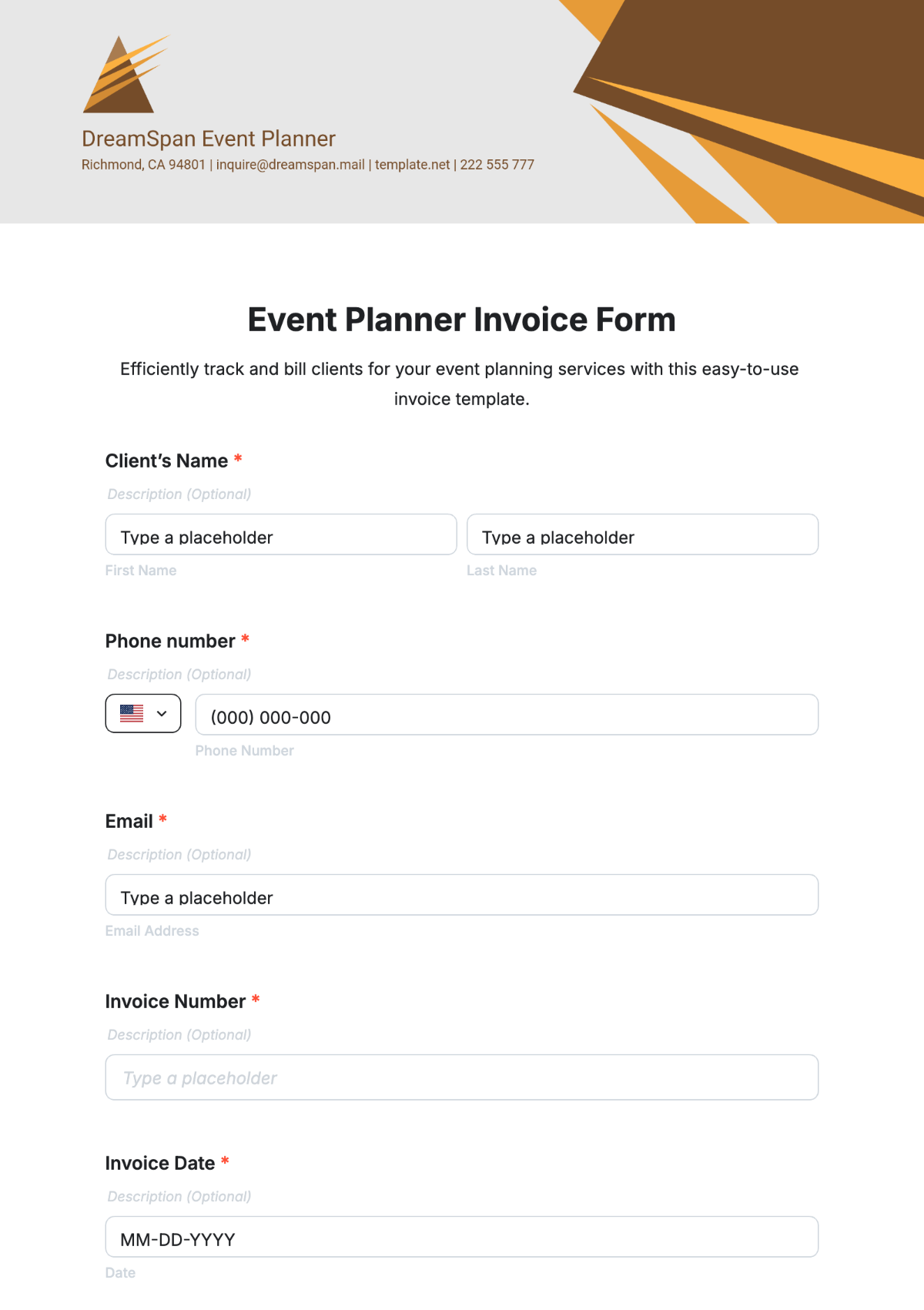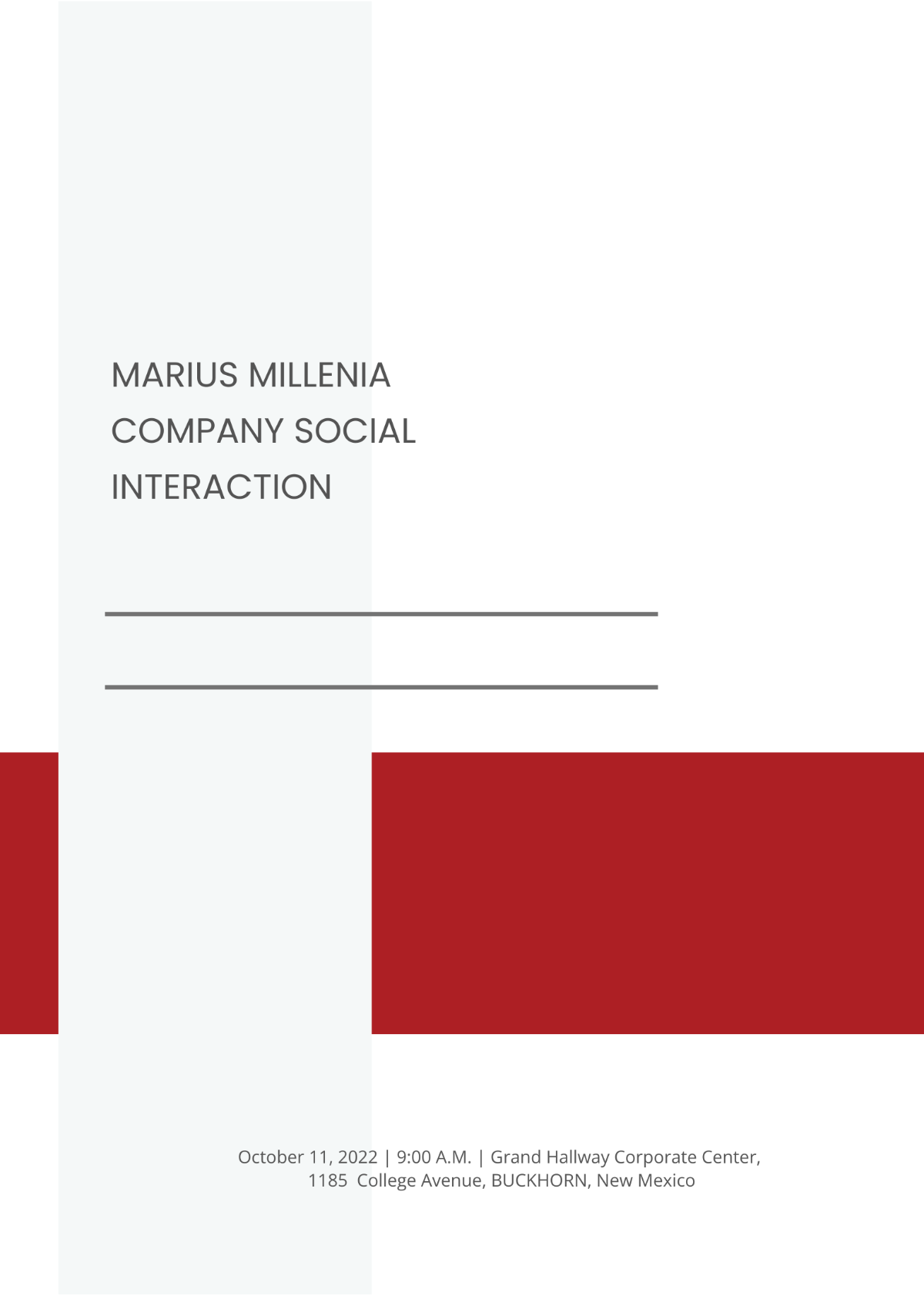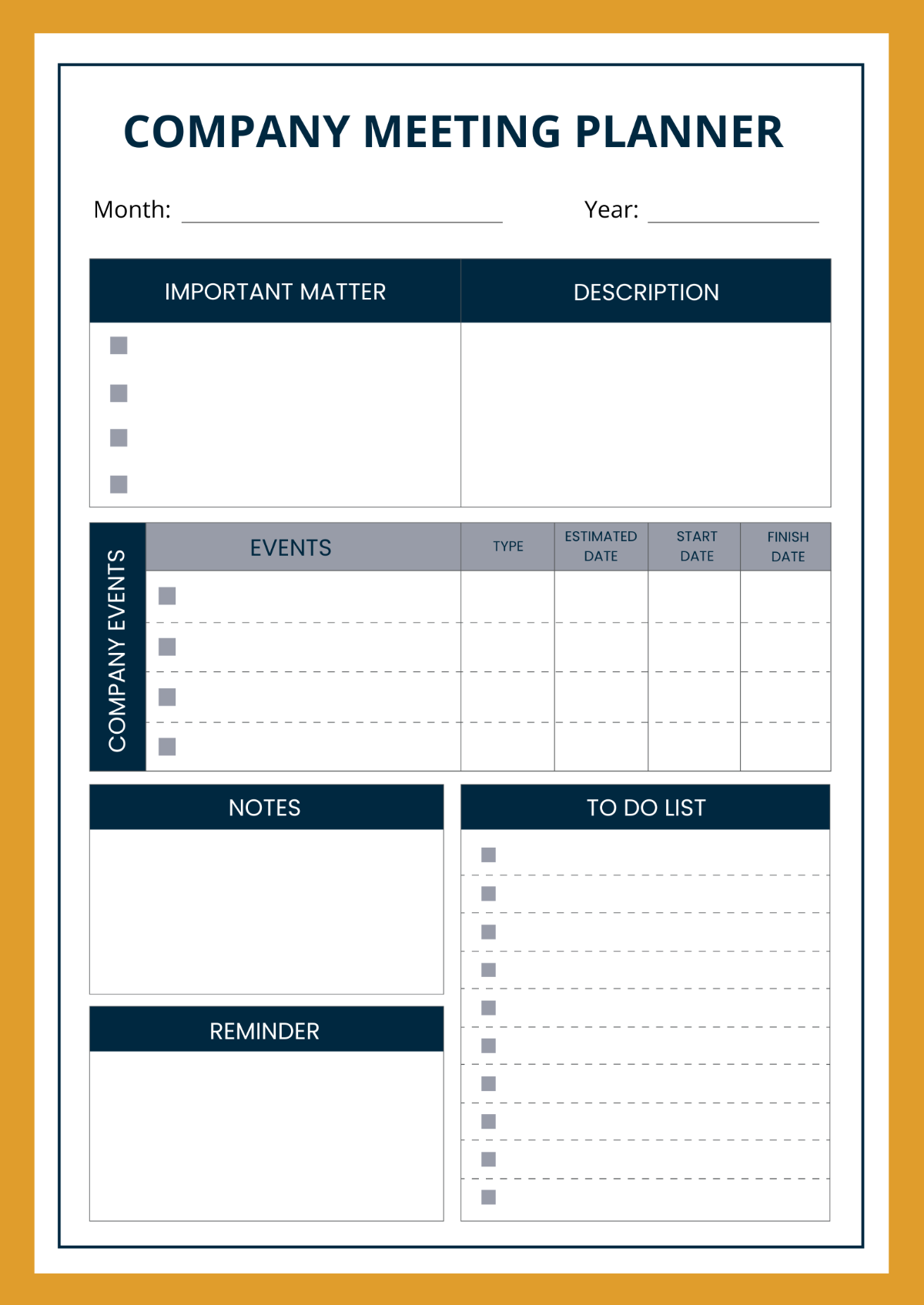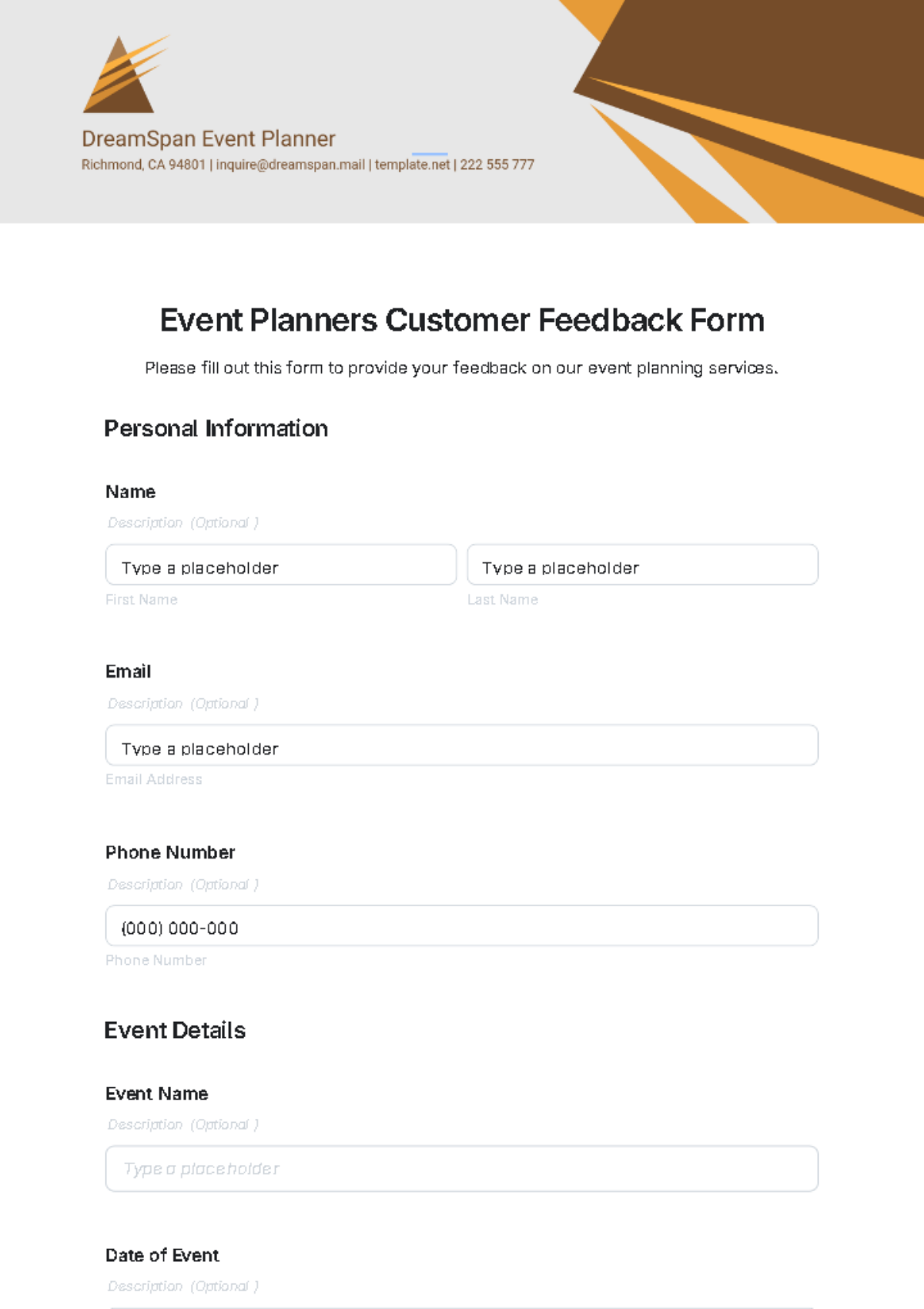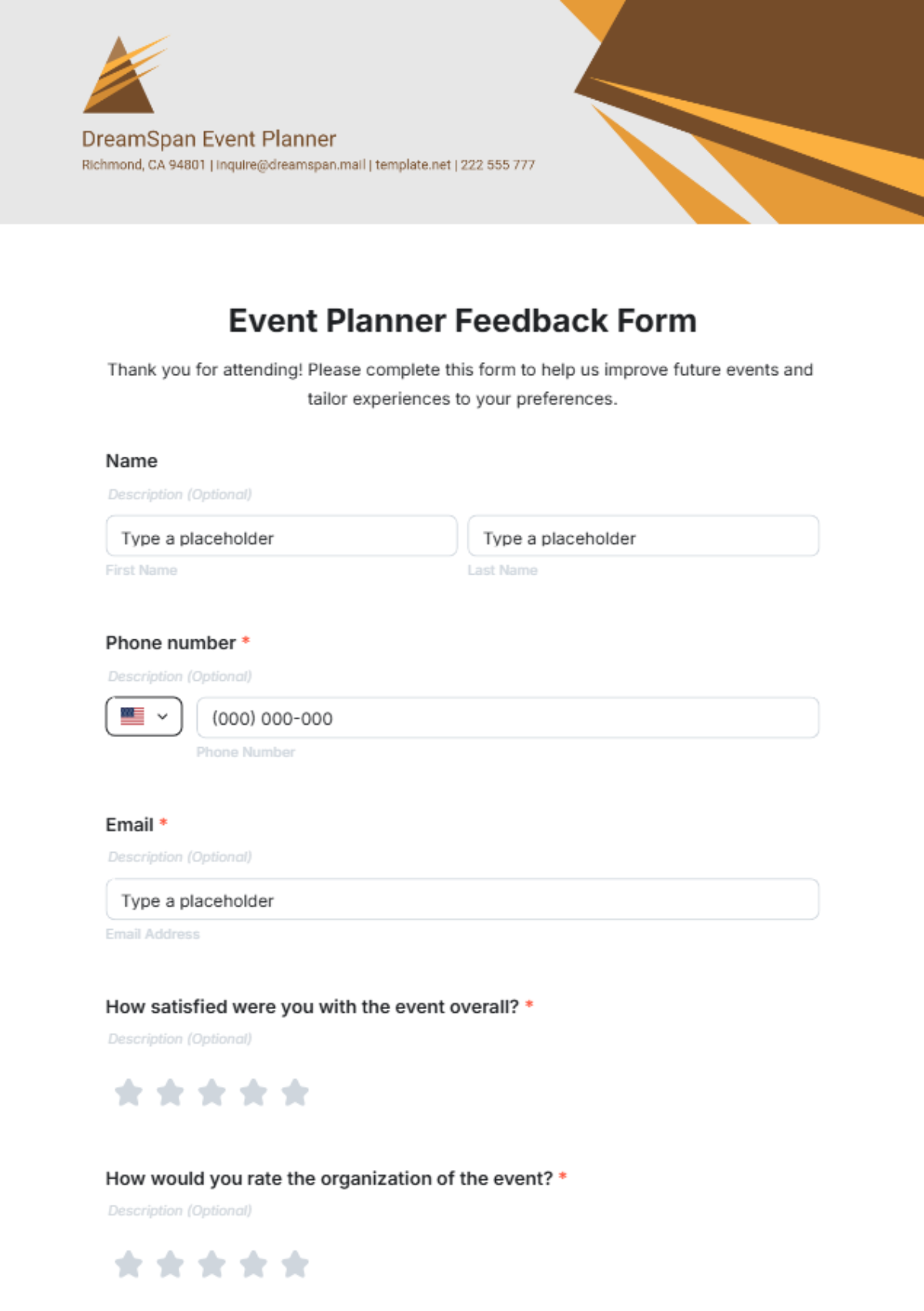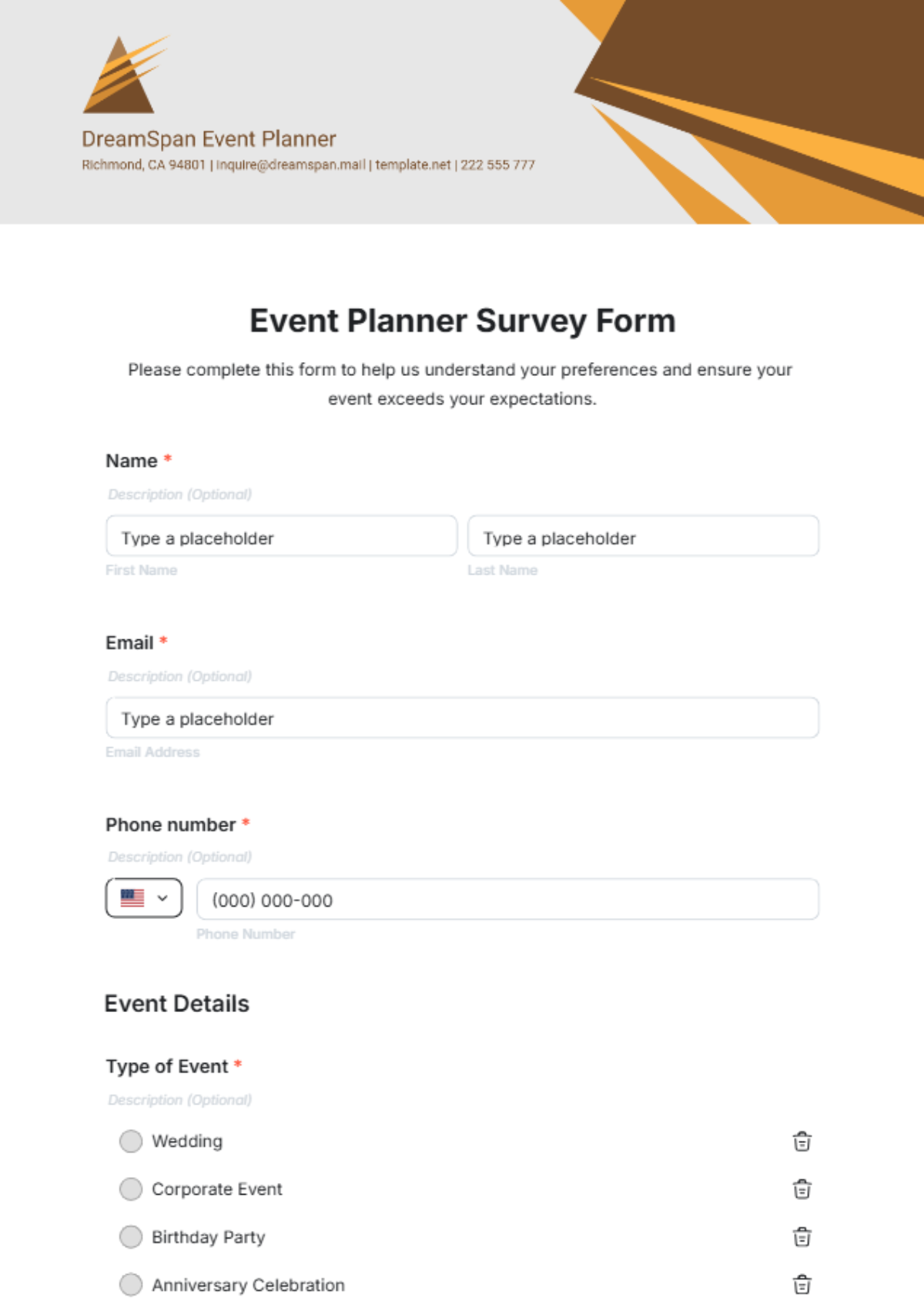Event Planner Security Plan
1. Executive Summary
The Event Planner Security Plan serves as a comprehensive framework to ensure the safety and security of all stakeholders involved in events organized by [Your Company Name]. In an increasingly complex world, the importance of rigorous security protocols cannot be overstated, especially as we look towards 2050 and beyond. This document outlines the necessary steps for risk assessment, the allocation of resources, and the responsibilities of security personnel to create a secure environment for attendees, staff, and assets.
1.1 Objectives
The primary objectives of this security plan are to:
Ensure Safety: To ensure the safety of attendees and staff through comprehensive risk assessments and preventive measures. This includes physical security, cybersecurity, and health-related concerns, all of which are paramount in ensuring a smooth event experience. The safety protocols are designed to be proactive rather than reactive, emphasizing prevention wherever possible.
Define Roles: To provide clear roles and responsibilities for security personnel and event staff. Everyone involved must understand their specific duties, which fosters an environment of accountability and efficiency. This clarity helps in minimizing overlaps and gaps in responsibilities, allowing for a more cohesive response to any incident.
Establish Response Procedures: To establish response procedures for potential security threats and emergencies. Preparing for the unexpected is crucial in minimizing risks and enhancing overall safety during events. This includes not only physical threats but also cyber threats that could disrupt the event.
Detail Budgeting Needs: To detail budgeting and financial resources required to implement and maintain security protocols. A well-structured budget ensures that all necessary security measures can be effectively funded and executed without compromising the quality of the event.
2. Security Overview
This section covers the general security needs of the event, including a breakdown of risk factors, potential threats, and necessary security resources.
2.1 Event Description
Event Name: Annual Tech Conference 2050
Location: Downtown Convention Center, [City Name]
Date(s): [Insert Date(s)]
Expected Attendees: [1,500]
Budget for Security Measures: $[75,000]
2.2 Risk Assessment
[Your Company Name] conducts a thorough risk assessment to identify and mitigate risks that could compromise the safety and success of the event. The risk assessment evaluates factors such as the nature of the event, location specifics, number of attendees, and potential external threats.
A comprehensive risk assessment includes:
Physical Threats: These include unauthorized access, crowd-related incidents, and equipment theft. Given the profile of the event, these threats could manifest in various forms, from someone attempting to enter without a ticket to organized theft of high-value equipment or materials. Measures will be taken to install sufficient security personnel to monitor entrances and deter such threats effectively.
Environmental Threats: Risks include extreme weather events, natural disasters, or power outages. For example, severe weather could lead to evacuations or a need for alternative shelter arrangements. A contingency plan will be developed to ensure that attendees can be directed to safe areas quickly and efficiently.
Cybersecurity Threats: The potential for hacking, phishing, or data theft from online registration systems and digital payment platforms is a significant concern. Given the reliance on digital solutions, robust cybersecurity measures will be essential to protect attendee information and maintain the integrity of the event.
Terrorism and Violent Threats: This assessment will analyze the potential for targeted attacks based on the event profile and regional history of security concerns. Analysis of past events and trends in the area will inform the level of threat and necessary countermeasures, allowing for a tailored approach to security.
2.3 Security Resources and Personnel
Security for the event requires a well-trained and equipped team with responsibilities spanning physical, digital, and emergency response areas.
Role | Number of Personnel | Responsibilities |
|---|---|---|
Security Guards | [20] | Patrol entrances, monitor crowds, and prevent unauthorized access. |
Cybersecurity Experts | [5] | Secure digital infrastructure and monitor for cyber threats. |
Medical Staff | [4] | Provide emergency medical aid and assist in evacuation if needed. |
Technical Support Staff | [3] | Monitor and manage security equipment such as CCTV, alarms, and access control systems. |
2.4 Training and Certification
All security personnel will undergo specialized training in emergency response, crowd management, and conflict resolution. Training will be conducted by certified organizations, ensuring all staff are equipped to handle various situations that may arise during the event. Certifications will be updated annually to ensure compliance with the latest standards and best practices.
Training programs will include simulated scenarios that closely mimic potential real-world incidents, enabling personnel to practice their response in a controlled environment. Regular refresher courses will also be scheduled to keep skills sharp and staff up to date on new protocols or technologies.
3. Security Measures
The security measures are divided into preventive, active, and reactive strategies to ensure comprehensive coverage for all potential threats.
3.1 Preventive Security Measures
Preventive measures focus on stopping security incidents before they happen.
3.1.1 Access Control
Entry Points: All entry points will be secured with electronic access controls, including biometric verification and QR code scanning for pre-registered attendees. This dual-layer security helps ensure that only authorized individuals gain access to the event. This advanced technology can drastically reduce the chance of unauthorized entry.
Badging System: Attendees, staff, and vendors will receive color-coded badges for easy identification and access control. Each color will represent different access levels, minimizing the risk of unauthorized access. Badges will also contain RFID chips to track movement within the venue.
Barrier Setup: Physical barriers, such as retractable belt barriers, will direct the flow of attendees and reduce the risk of crowd-related incidents. Clear signage will also inform attendees of entry and exit points to minimize confusion and streamline movement through the venue.
3.1.2 Surveillance Systems
CCTV Cameras: Security cameras will be installed at all entry and exit points, as well as in key areas within the event premises, ensuring complete surveillance coverage. A minimum of [50] cameras will be deployed, providing real-time monitoring to identify potential threats quickly. Video footage will be archived for a set period in case of incidents that require investigation.
Facial Recognition Software: Advanced facial recognition software will be employed to identify individuals on watchlists. This technology enables proactive identification of potential security risks and enhances overall safety. The software will be integrated with the entry system for real-time alerts to security personnel.
Monitoring Team: A dedicated team will oversee real-time footage and coordinate with on-ground security personnel in case of suspicious activity. This team will operate from the command center and maintain constant communication with field officers, ensuring rapid response to any issues that arise.
3.1.3 Cybersecurity Protocols
Firewall and Antivirus: Secure firewalls and antivirus software will be installed on all systems managing event data and attendee information. This will protect sensitive data from cyber threats and unauthorized access. Regular vulnerability assessments will be conducted to identify and mitigate potential weaknesses.
Data Encryption: All attendee data, including personal and payment information, will be encrypted. Encryption will be a priority for data at rest and data in transit, minimizing risks associated with data breaches. This includes using Secure Sockets Layer (SSL) certificates for online transactions.
Two-Factor Authentication: Access to digital systems will require two-factor authentication for added security, reducing the risk of unauthorized access to sensitive information. Staff will be trained on the importance of this practice to enhance overall data protection.
3.2 Active Security Measures
Active measures include on-the-ground security tactics used during the event.
3.2.1 Crowd Management
Emergency Exits: All emergency exits will be clearly marked and unobstructed. Signage will be placed throughout the venue to guide attendees to the nearest exit in case of emergencies. Regular checks will be performed to ensure that these exits remain accessible throughout the event.
Staggered Entry: Attendees will be allowed entry in controlled batches to prevent overcrowding. This approach will facilitate smoother processing and minimize wait times at entry points. Announcements will be made to inform attendees of their designated entry times.
Trained Personnel: Security personnel trained in crowd control techniques will monitor high-traffic areas and be ready to intervene if necessary. These personnel will be equipped to diffuse tensions and maintain a calm environment. Regular briefings will ensure they are aware of any specific concerns or expected challenges.
3.2.2 Response to Threats
Suspicious Activity Reporting: Attendees will be encouraged to report suspicious activities through a secure app or to security personnel. Clear instructions will be communicated during the event to raise awareness and promote proactive behavior. A dedicated hotline will also be available for urgent reports.
Immediate Threat Protocol: Security teams will have established protocols for responding to immediate threats, including temporary lockdowns, evacuations, or other containment measures. This ensures that staff can act decisively in a crisis situation, minimizing panic and confusion among attendees.
3.2.3 Medical Support
First Aid Stations: Equipped with essential medical supplies and staffed by trained medical personnel, these stations will be strategically located throughout the venue to ensure quick access. Each station will have a clear, visible sign and be staffed at all times during the event.
On-Site Ambulance: An on-site ambulance will be available for immediate transport of any serious medical cases to nearby hospitals. Partnerships with local hospitals will ensure that emergency response plans are in place for rapid medical assistance.
3.3 Reactive Security Measures
Reactive measures focus on what to do after an incident has occurred.
3.3.1 Incident Reporting
Documentation: All incidents, whether minor or major, will be documented thoroughly. This will include descriptions of the incident, actions taken, and outcomes. Incident reports will be reviewed regularly to identify trends and areas for improvement. This data will be crucial for ongoing training and evaluation of security measures.
Debriefing Sessions: Following the event, debriefing sessions will be held to discuss any incidents that occurred, assess the effectiveness of responses, and adjust protocols as necessary. Feedback from attendees and staff will also be solicited to gain insights into their experiences.
3.3.2 Collaboration with Authorities
Local Law Enforcement: A liaison will be established with local law enforcement agencies to ensure swift assistance in case of serious incidents. This collaboration will facilitate better communication and coordination during emergencies.
Emergency Services: Contact information for local emergency services will be readily available to all security personnel, ensuring rapid response to any incidents. Security staff will be trained in basic communication protocols to ensure that accurate information is relayed quickly.
4. Emergency Response Procedures
Emergencies can occur at any time, and having a clear response protocol is essential for minimizing their impact.
4.1 Emergency Situations
To prepare for various emergencies, the following protocols will be established and communicated to all staff and security personnel:
Scenario | Response Protocol |
|---|---|
Fire Alarm | Activate the fire alarm, evacuate attendees via marked exits, notify the local fire department, and conduct a headcount once safe. A designated team will assist attendees with mobility issues in evacuation. |
Medical Emergency | Deploy medical staff to the scene, assess the situation, provide immediate care, and if necessary, transport the individual to the hospital. All personnel will carry communication devices to facilitate prompt response and updates. |
Severe Weather Alert | Communicate with attendees via PA, direct them to safe zones, monitor weather conditions continuously, and provide updates on the situation. Staff will be stationed at exit points to guide attendees to shelter. |
Suspicious Person/Activity | Assess the situation using surveillance; if necessary, approach the individual and escalate to law enforcement if they pose a threat. Pre-established protocols will guide personnel on how to de-escalate situations and ensure attendee safety. |
4.2 Communication
Effective communication is key to ensuring a smooth emergency response. All event staff will be equipped with radios for instant communication with the security command center. A public address system will be available for announcements, and an event app will provide real-time updates to attendees.
In case of an emergency, clear instructions will be relayed through all communication channels to guide attendees on what to do. This will include directions for evacuation or safe zones, ensuring that everyone remains informed and calm during crises.
5. Budgeting for Security
5.1 Cost Breakdown
Effective budgeting is crucial for the successful implementation of security measures. The following table outlines the estimated costs associated with various security resources.
Security Measure | Estimated Cost ($) |
|---|---|
Security Personnel (staffing) | [35,000] |
Surveillance Equipment (CCTV, software) | [20,000] |
Medical Support (first aid, ambulance) | [10,000] |
Communication Systems (radios, PA) | [5,000] |
Training and Certification | [3,000] |
Contingency Fund (10% of total) | [7,000] |
Total Estimated Cost | [75,000] |
5.2 Funding Sources
Funding for security measures will come from a combination of ticket sales, sponsorships, and allocated funds from [Your Company Name]. By ensuring a diverse funding base, the company can enhance its ability to provide a safe and secure environment without compromising other aspects of event planning.
Additionally, potential partnerships with local businesses and community organizations may provide supplemental funding or resources, further enhancing security without significantly increasing costs.
6. Conclusion
In conclusion, the Event Planner Security Plan for the Annual Tech Conference 2050 prepared by [Your Company Name] is a comprehensive framework designed to address various security threats and ensure the safety of all participants. This plan emphasizes the importance of thorough risk assessments, well-trained personnel, effective communication, and emergency preparedness.
The proactive approach outlined in this plan, from the initial risk assessments to the allocation of resources, demonstrates a commitment to creating a secure environment for all stakeholders. By implementing the strategies outlined herein, [Your Company Name] aims to create an event environment that promotes attendee engagement while minimizing risks.
This plan will be reviewed and updated regularly to adapt to changing circumstances and advancements in security technology, ensuring that we are always prepared for the future. Continuous evaluation and feedback from event participants will also help refine security measures, creating a safer experience for everyone involved.
Regular training, adherence to updated protocols, and fostering a culture of safety will ensure that [Your Company Name] remains at the forefront of event security, allowing for successful events in the years to come.























